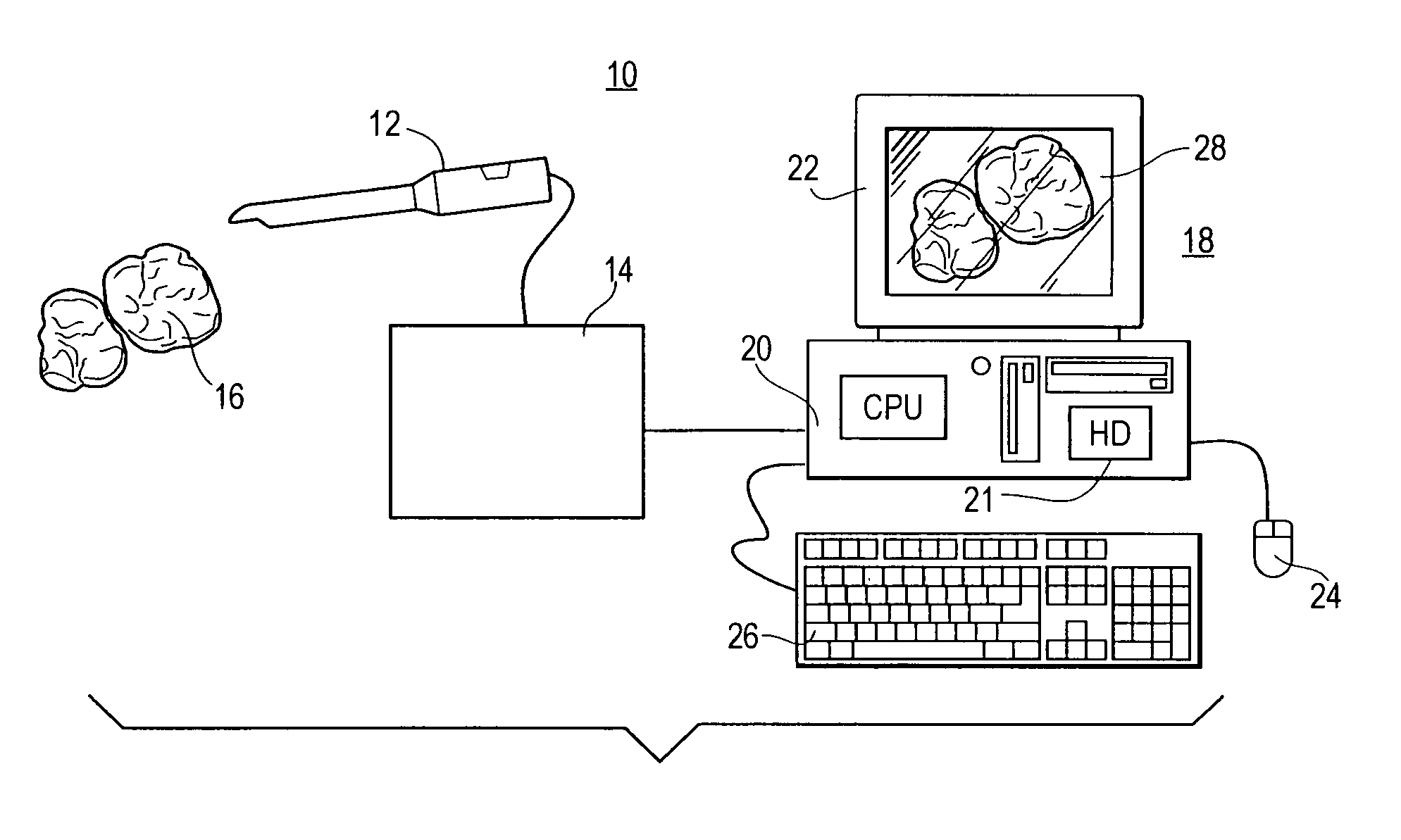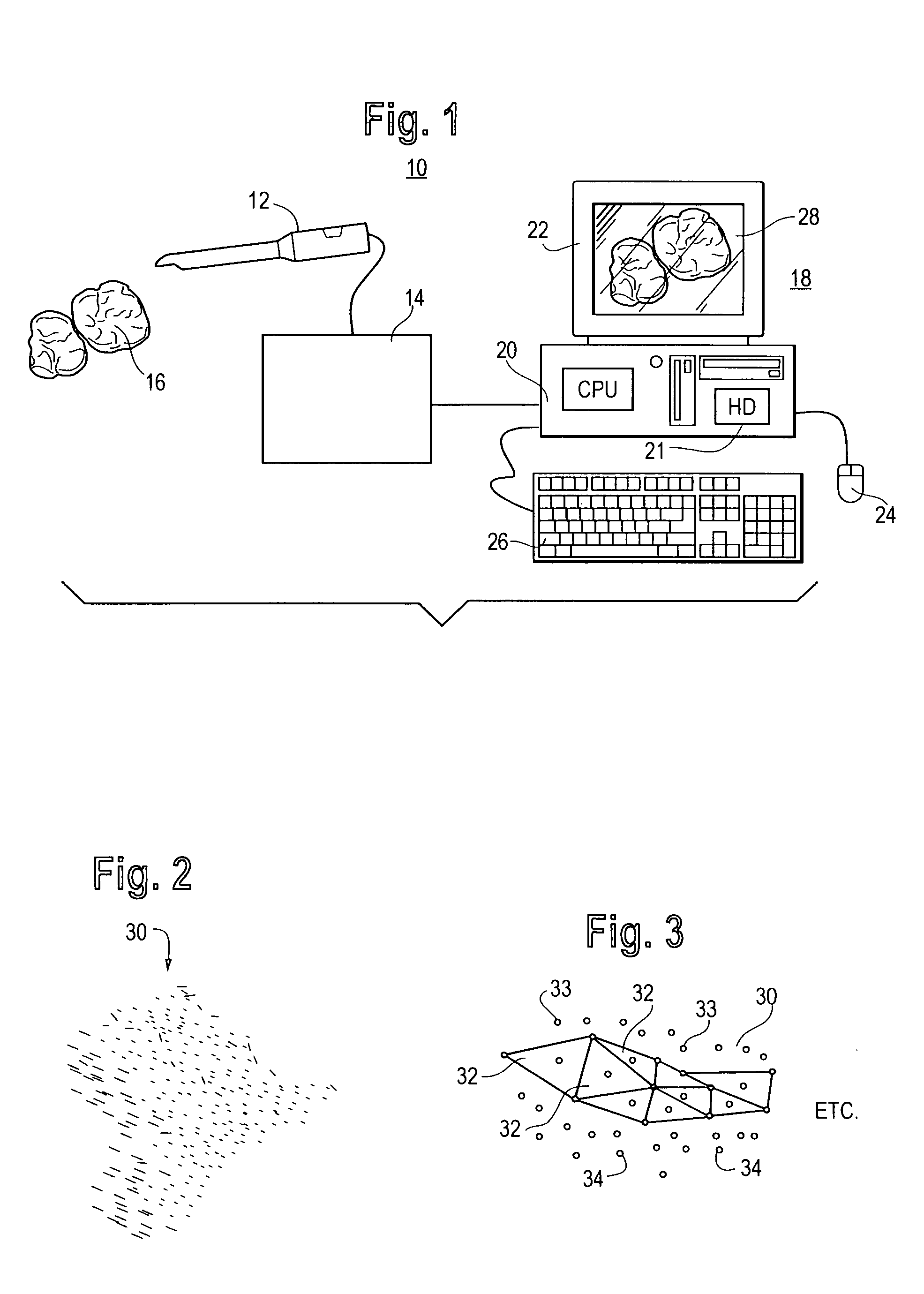Automatic crown and gingiva detection from three-dimensional virtual model of teeth
a three-dimensional virtual model and automatic technology, applied in the field of automatic crown and gingiva detection from three-dimensional virtual model of teeth, can solve the problems of large volume of images and data involved, limited in their functionalities and scope, and substantial manual work involved in these steps
- Summary
- Abstract
- Description
- Claims
- Application Information
AI Technical Summary
Benefits of technology
Problems solved by technology
Method used
Image
Examples
Embodiment Construction
FIG. 1 is a schematic diagram of one possible environment in which the invention can be practiced. A scanner 10 consisting of an optical probe unit 12 and scanner electronics module 14 conducts a 3D scan of an object 16. The object 16 can be virtually anything. In the present example. the object 16 consists of dentition 15 and associated anatomical structures (gingival tissue) 17. The scan of the dentition and gum tissue could be obtained either in-vivo, or it could be made from a physical model of the dentition and associated anatomical structures. The present invention is not limited to the particular manner in which the virtual model of the dentition and gingival tissue is obtained. For example, the scanner could be a laser scanner or destructive scanner. In the illustrated embodiment, the scanner is a hand-held in-vivo scanner as described in the published PCT application of OraMetrix, publication no. WO 01 / 80761, the contents of which are incorporated by reference herein. An op...
PUM
 Login to View More
Login to View More Abstract
Description
Claims
Application Information
 Login to View More
Login to View More - R&D
- Intellectual Property
- Life Sciences
- Materials
- Tech Scout
- Unparalleled Data Quality
- Higher Quality Content
- 60% Fewer Hallucinations
Browse by: Latest US Patents, China's latest patents, Technical Efficacy Thesaurus, Application Domain, Technology Topic, Popular Technical Reports.
© 2025 PatSnap. All rights reserved.Legal|Privacy policy|Modern Slavery Act Transparency Statement|Sitemap|About US| Contact US: help@patsnap.com



